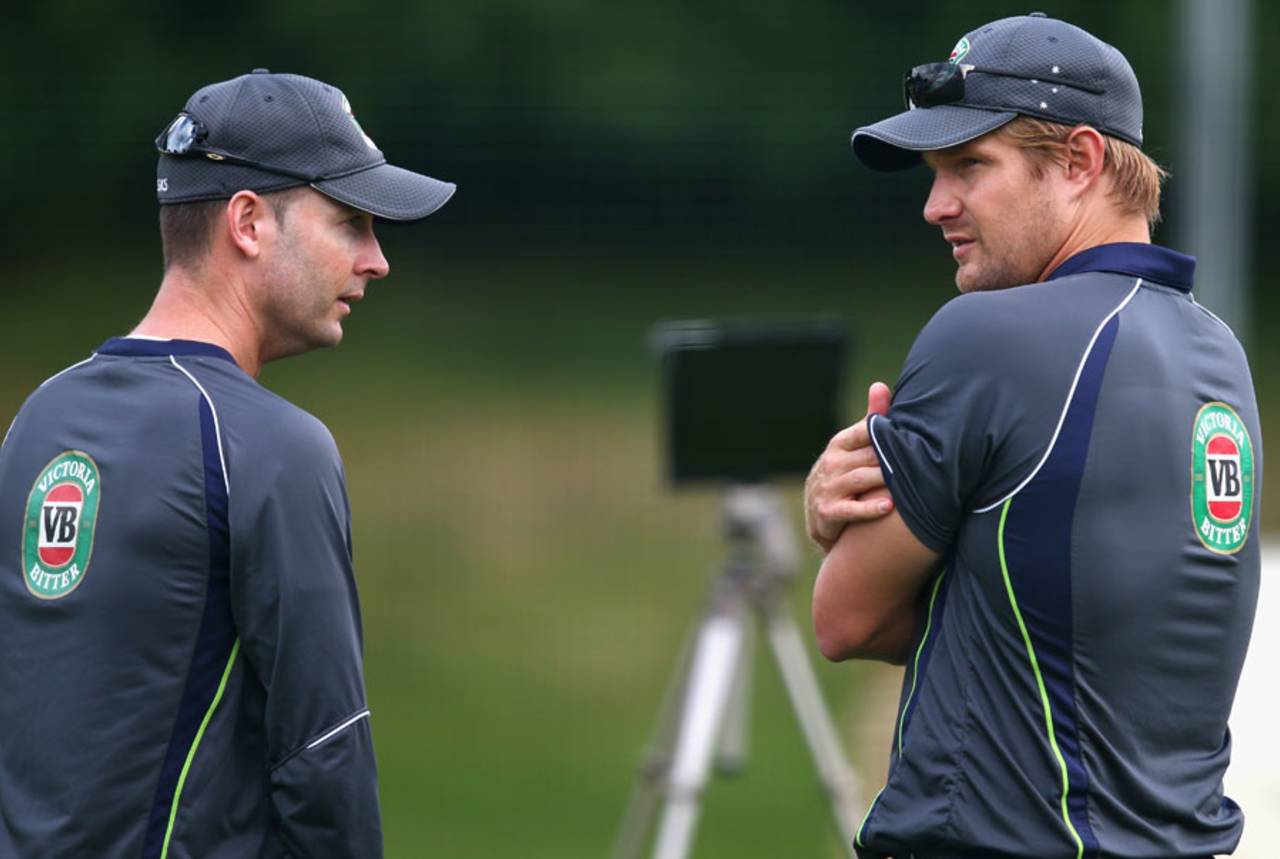My tongue-in-cheek comment about
Shane Watson in my
most recent piece was never meant to be taken literally, but sadly, it appears that when he is recovering from one injury, his fragile body finds a way to pick up another sore spot. Clearly, "calf soreness" is medical jargon for a more serious condition - it is scarcely believable that soreness itself would prevent someone from playing international cricket.
As has been well documented, both Watson and
Michael Clarke have a history of soft-tissue injuries and the curse continues. It is a topic on which I have waxed hysterical on more than occasion and I am yet to be convinced that the sports science community has an answer. They appear very capable of diagnosing and detecting soreness but the continuing injury toll makes a mockery of their restorative powers, apart from prescribing rest and rehabilitation which any layman can prescribe too.
Just recently I happened to catch up with Sheldon Stackpoole, a young chap I coached at junior cricket camps in Brisbane when he was barely ten (he is now a grown man). His promising cricket career was cut short before he even finished university, due to soft-tissue injuries and this took him on a decade-long path of discovery that led him to the USA to study directly under a world-renowned physical therapist, John F Barnes. Even I had heard of his name in the sports injury field so my curiosity was piqued.
Our common love of cricket inevitably led us straight to the hot topic of cricket injuries. He has been following my frustrations on this topic in the Cordon and has an interesting philosophy that makes a lot more sense than anything else I've heard from a sports injury perspective. We've since exchanged correspondence that I thought would be worth sharing. He has a way of explaining things that I found refreshingly simple, given my lack of technical/anatomical expertise.
It is often forgotten when treating soft-tissue injuries that our body is approximately 70% water. The body's fluid system, the fascial system, is a liquid crystalline (gel) matrix that surrounds and infuses every muscle, bone, nerve, artery and vein as well as our internal organs all the way down to the cellular level. It is one continuous structure and exists from head to toe without interruption.
Just about every cricket nation is experiencing the same ratio of injuries, despite business-class travel, sports drinks, ice baths, massages, yoga, compression garments and extensive warm-up routines
Muscles and fascia form what is known as myofascial tissue. The "myo", which refers to muscle fibres, are predominantly elastin. The fascia, comprised of mainly collagen, the most commonly occurring protein in our body, forms microtubules filled with a gel-like ground substance comprised of mainly water.
In a fit and healthy athlete, fascia glides and flows smoothly. After injury or repetitive trauma, as in the case of Clarke and Watson, the fascia solidifies, adhesions form, and what should be liquid starts to crystallise. In a solidified state, fascia becomes dehydrated, which results in poor nutrition for the cell and ultimately incomplete healing for the tissue. Stackpoole assures me that research has demonstrated that properly hydrated fascia is more than four times stronger than dehydrated fascia. To compensate, the body lays down extra tissue (scar tissue) in an attempt to shore up a compromised structure. Standard medical imaging technology cannot see fascia or fascial restrictions, leaving such players on the re-injury treadmill.
Alternating training approaches, reducing weights sessions and flying early are all positive measures in dealing with their current injuries. However, these apparently don't address returning the soft tissue back to its healthy, fluid state.
Where these therapists would begin would be a thorough head-to-toe assessment of Clarke and Watson's range of motion to determine where they have fascial restrictions. The treatment would involve applying gentle, sustained pressure for at least five minutes to tight, restricted tissue. Just as an egg (protein) takes around five minutes to change from a liquid to a solid in the boiling process, so too does the body's soft tissue to return from a solid to a gel. This approach has apparently been scientifically shown to produce natural anti-inflammatories directly to the site and has the effect of erasing muscle memory surrounding the injury.
Now I'm not enough of an expert to say for sure whether this will work or not but it makes logical sense. One thing's for sure, with both Clarke and Watson, the conventional sports medicine that they have currently been using hasn't worked to any great degree. To be fair, that may not be the fault of the skilled and dedicated professionals who are doing everything in their power but may simply be defeated by soft tissue that is not given the opportunity to heal in the long term. Just about every cricket nation is experiencing the same ratio of injuries, despite business-class travel, sports drinks, ice baths, massages, yoga, compression garments and extensive warm-up routines. Some bowlers get injured in their first spell, despite all of the above (like Wayne Parnell and Dale Steyn v Australia in their recent Test series).
I'm still of the belief that our modern cricketers may be fitter and stronger than they have ever been but they are less elastic and durable. That's layman's speak for a system that has created finely tuned athletes who tear muscles that old bowlers like me never knew we had. I'm off to the wilds of Africa soon and knowing the potholes and ditches I will have to drive over to get to the pristine wilderness areas I crave, I would rather be in a Maruti than a Mercedes!
Michael Jeh is an Oxford Blue who played first-class cricket, and a Playing Member of the MCC. He lives in Brisbane
